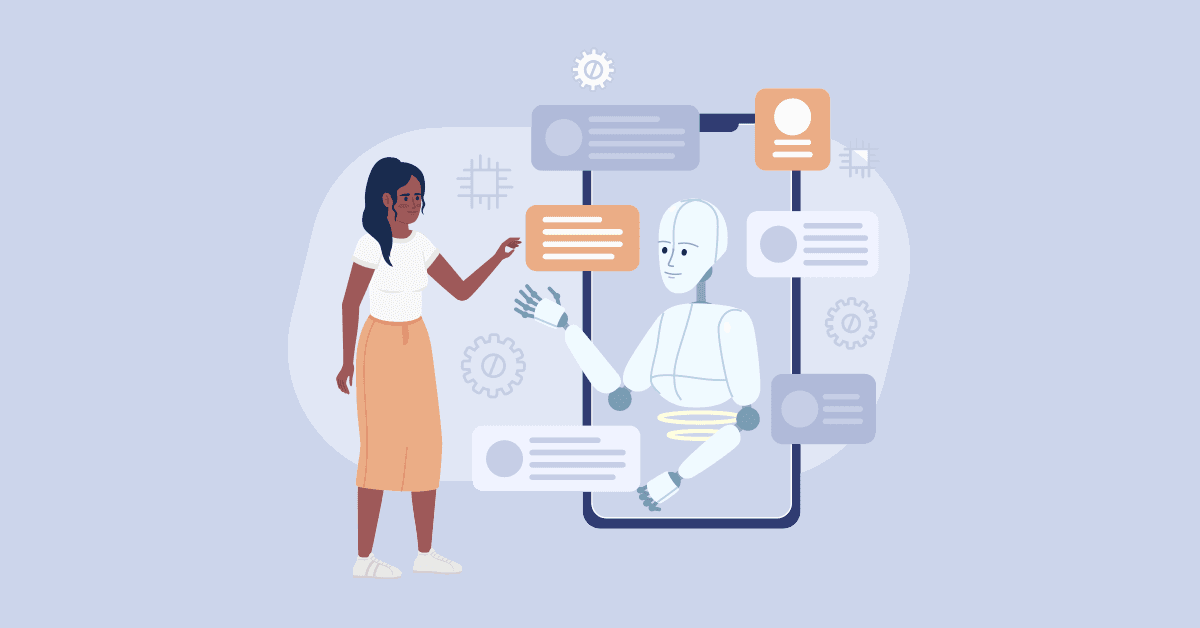What Are the Limitations of AI in Social Media Marketing?
Imagine leveraging AI to revolutionize your social media marketing efforts, only to encounter unforeseen challenges. In this article, experts like a co-founder and Chief Marketing Officer share their valuable insights. The discussion opens with advice on starting small with scalable AI tools and wraps up with the importance of maintaining transparency in AI-generated content. With eighteen unique perspectives, this comprehensive guide equips businesses to maximize AI’s benefits while navigating its limitations.

I’ve found that the rising costs and complexities of AI technology can really set smaller businesses back, especially those just starting with social media marketing. If you’re looking to introduce advanced AI tools, be prepared for important investments in both software and expert knowledge. I’m not only talking about purchasing the software; you also have to think about training your team or hiring new specialists. This can be a real financial stretch for many companies. Plus, if your team isn’t tech-savvy, handling the technicalities of AI can lead to wasted resources and disappointing results.
To navigate these hurdles, I always suggest starting small. Opt for AI tools that scale with your business and fit your budget. There’s no need to talk about complex solutions right off the bat. Many AI platforms offer different tiers of pricing and features, which can be a great way to ease into automation without facing steep upfront costs. Another technique I’ve found useful is outsourcing. Consider using third-party vendors or AI-as-a-service solutions. These options can help manage the difficulty and reduce costs, which makes it much easier to integrate AI into your business operations without sinking too much money into it.
Choosing the right tools and balancing them with human oversight can really improve your efficiency and keep your costs in check. By taking strategic steps, you can maximize the benefits of AI and make sure it adds value to your business without overstressing your budget.
Tip 2
Invest in AI Training for Teams

Lata Tewari, Chief Marketing Officer, Webuters Technologies Pvt Ltd
One significant challenge businesses face when implementing AI for social media marketing is that their teams may not be fully “AI-ready.” While AI offers powerful tools for streamlining content creation, audience targeting, and engagement analysis, these benefits can be limited if the team isn’t equipped to use the technology effectively.
The key to overcoming this limitation is investing in AI training for your team. Businesses need to guide their teams through the process of adopting AI, helping them understand the technology’s capabilities and how it can complement their current workflows. AI isn’t a temporary trend—it’s here to stay and will continue to shape the future of marketing.
When we introduced OfficeIQ AI into our operations, our team initially faced challenges similar to this. However, after dedicated training, they adapted quickly and began leveraging AI across sales, marketing, and even team collaboration. By preparing your workforce to work alongside AI, you not only maximize the technology’s potential but also future-proof your business.
The transition may take time and effort, but the benefits of increased efficiency and strategic decision-making far outweigh the initial hurdles.
Tip 3
Blend AI with Human Oversight

Eddie Velosa, Copywriter by trade. Neurodiversity Dadvocate at heart., Velosa Co.
One limitation businesses may encounter when using AI for social media marketing is the potential lack of genuine human connection in the content. While AI can efficiently generate posts, schedule content, and analyze data, it sometimes struggles to capture the authentic tone and emotional depth that resonates with audiences, potentially making interactions feel robotic or impersonal.
To mitigate this limitation, businesses can blend AI with human oversight. AI tools can handle data analysis, automate routine tasks, and generate drafts, but human marketers should fine-tune the content to ensure it aligns with brand voice and connects with audiences on a personal level.
By using AI for efficiency and humans for creativity and emotional nuance, businesses can maximize the benefits of AI without sacrificing authenticity in their social media strategy.
Tip 4
Complement AI Insights with Human Analysis

Divya Ghughatyal, Digital Marketing Consultant, Gleantap
One significant challenge businesses may face when using AI for social-media marketing is the risk of misinterpretation of data. AI algorithms can sometimes generate insights based on patterns that may not accurately reflect consumer sentiment or behavior, leading to misguided marketing strategies. To mitigate this limitation, businesses should complement AI-generated insights with human analysis. This involves regularly reviewing AI findings, engaging with customers directly through surveys or feedback, and monitoring social-media interactions.
By integrating qualitative insights with quantitative data, companies can ensure a more comprehensive understanding of their audience. Additionally, investing in ongoing AI training and updates can enhance the system’s accuracy over time, allowing businesses to leverage AI technology effectively while minimizing potential drawbacks. This balanced approach maximizes the benefits of AI, ensuring strategies are both data-driven and aligned with customer needs.
A challenge businesses may encounter when using AI for social media marketing is the risk of over-reliance on automation. This is a common problem when integrating AI automation into any part of a workflow; users find it so easy that having to do any work themselves feels like they are wasting time.
While AI can streamline tasks and save time, it’s important to maintain a human touch in all processes. This is especially true in social media interactions, as the audience is so well-versed in how humans write and respond on social media that often they can easily identify anything that is done by AI, which then harms their image as being disingenuous.
To mitigate this problem, businesses should ensure:
- Human-Driven Strategy: Develop a clear social media strategy that is driven by human insights and creativity and is adjusted accordingly as the strategy matures.
- Personalized Engagement: Use AI to assist with tasks like scheduling and content suggestions, but ensure that human team members handle more personalized interactions and crisis management.
- Monitor and Adjust: Continuously monitor the performance of AI-driven campaigns and make adjustments as needed to maintain a human-centric approach.
By striking a balance between automation and human involvement, businesses can leverage the benefits of AI while avoiding the pitfalls of over-reliance.
Tip 6
Manually Check AI-Generated Insights

Syed Rayyan, Founder and Digital Marketing Strategist, Bizitron
From my experience using AI for social media marketing, understanding the nuanced context of user-generated content is a serious limitation of these tools. I’m especially concerned about sentiment analysis, where AI often misinterprets sarcasm, humor, and regional dialects. For instance, a social media post that uses sarcasm to convey frustration could be misclassified as positive sentiment by an AI tool, leading to inappropriate marketing responses or campaign strategies.
I believe the best solution to this limitation is to complement AI-driven insights with manual checks, especially for high-stakes campaigns. Incorporating tools like Brandwatch for social listening and sentiment analysis can help you get a clear understanding of public perception while employing a team to assess complex nuances that AI might miss.
We faced this challenge while working with a client in the fashion industry, launching a campaign based on AI-generated insights from Sprout Social. The AI flagged an uptick in positive sentiment around “sustainable fashion.” However, upon human review, we discovered that many posts were sarcastic critiques of brands that greenwash their practices.
This insight allowed us to pivot the campaign towards genuine sustainable efforts and helped us align our messaging correctly, avoiding any potential backlash. Leveraging both AI tools and human oversight made it possible for us to maximize the campaign’s effectiveness and engage the audience meaningfully.
As a social-media marketer for years, I have seen various transitional phases in the sphere, and generative AI is one of the major transitions that has redefined the process for marketers. AI tools are intensely information-driven, perceptive, and fast in generating social media content.
However, the downside here is that it somehow turns out to be disengaging and unyielding when complex human emotions are involved. It may not resonate with emotional understanding, keep up with language nuances, or align with the human receptivity quotient at any time, without a clue.
To mitigate this, businesses can bring together the AI inputs and review and fine-tune them to align with the deep human voice. This may be done by keeping it fully connected with the brand’s goal and communication purpose to maximize the results in terms of making meaningful impact and building relevant connections with target audiences to get the most out of social media platforms. Remember AI is and will always remain a subset of human intelligence and emotions, so let’s deal accordingly!
With the rise of AI, it brings a drastic change in the game of social media marketing. The reason being it offers unmatched insights, automation, and personalized experiences. But with some benefits, it has brought up many challenges with it, one of which is significant—the potential for algorithmic bias, much like any other smart technology.
Algorithmic bias usually occurs when AI systems provide results that are usually quite unfair or discriminatory.
A few of the common potential causes for this include erroneous algorithm design, skewed training data, and inadvertent biases on the part of developers. Algorithmic bias in social media marketing might have serious repercussions:
- Spread of Misinformation – Biased algorithms can magnify false information and propaganda, enabling targeted disinformation campaigns that may harm individuals or communities.
- Minimal Visibility – If biased algorithms disproportionately affect content from underrepresented groups, it may be difficult for such content to reach larger audiences, which would limit exposure and engagement.
- Reinforcing Stereotypes – A more divided online community can result from biased algorithms that reinforce preconceptions and stereotypes. This can exacerbate polarization.
- Brand Damage – Businesses that use AI-powered social media strategies risk damage to their brand if it becomes known that their algorithms are prejudiced.
To effectively utilize AI while managing its hazards, companies ought to adopt a calculated strategy to lessen algorithmic prejudice:
- Inclusive Training Data – When training AI models, use representative and diverse datasets to reduce the presence of inherent biases in the data.
- Transparent Development – Ensure transparency by documenting how AI algorithms are developed and making them available for external review.
- Human Monitoring – To prevent negative or discriminatory effects, make sure that human monitoring is still incorporated into AI-driven marketing initiatives.
Researchers, underrepresented communities, and advocacy organizations are examples of diverse stakeholders. These techniques are meant to assist in locating and lessening biases in AI systems.
We’ve identified a potential stumbling block to applying AI to social media marketing—homogenization of content. AI can unwittingly be generic, without the human edge that makes it relevant to our viewers.
We’ve responded to this with a process strategy that leverages AI to save time, while still requiring human management to preserve the distinct voice of our brand. AI can be useful for ideas of content and drafting posts. For example, we can ask AI to suggest industry trends or evaluate competitor content. But human attention is what fleshes out these drafts. Our social media team makes sure that the content speaks our brand voice, carries engaging imagery depicting our beautiful cleaning results, and uses language to fit in with our high-end clients.
This human-AI partnership has been very effective. Using AI to create and optimize content has enabled us to grow our social media productivity dramatically without compromising the level of quality. The result is an effective use of AI technology while keeping our brand value to better resonate with our audience.
Tip 10
Refine AI-Generated Images for Consistency

Kacper Rafalski, Demand Generation Team Leader, Netguru
Speaking from my experience, AI image generators like Midjourney or Leonardo AI, despite their capabilities, often struggle to consistently produce images featuring the same product or model in an identical style. This variability can disrupt campaign flow and weaken brand recognition. During a recent project, we tried using AI to create a series of images for our main product. While each image looked good individually, the subtle differences in style, lighting, and product details made the overall campaign feel disconnected, so we ditched it.
Trying to make those images work somehow, after some time, we’ve started using AI-generated images as initial concepts, which our design team then refines and standardizes. It combines AI efficiency with human expertise to achieve brand consistency.
We’ve also developed a detailed style guide specifically for AI inputs, defining parameters like color schemes, product angles, and background elements. I must admit it has significantly improved the consistency of our AI-generated content and as the tools are getting more advanced, our design team has less and less work to do around those images.
In my opinion, A.I. for social media is currently best used as an assistive tool rather than a stand-alone one. It’s still essential to have a professional marketer on the team to oversee its work. Without this, your social media presence can feel too artificial, which makes it unengaging and dull. This is largely due to the limitations A.I. has.
For example, if you ask ChatGPT to write a smart post for Facebook or LinkedIn on a specific topic for your account, you’ll likely get a template filled with simple phrases and emojis. You’ll still need to put in some work.
To make this truly effective, you need to be as specific as possible when setting the task:
- Provide 20-30 of your posts and ask ChatGPT to analyze your style.
- Offer a couple of texts you’d like the post to be based on.
- Write a proper prompt. For example: “Act like a marketer with 10 years of experience. Write a comment in my writing style on topic X, based on the previous texts. Mention A, B, C (here, briefly outline your ideas). Use simple but smart sentences.”
This way, ChatGPT can generate a text that fits your needs.
Tip 12
Prioritize Originality Over AI Automation

Katharina Garmon, CEO & Founder of Socialkind Studio, Socialkind Studio LLC
The access to AI has opened so many doors for businesses, simplifying tasks like content creation and scheduling, which can save a lot of time. But we like to look at AI with a critical eye. One of the biggest limitations businesses face when using AI software for social media marketing is that AI is just not capable of creating original content—it’s simply pulling from what already exists online and putting its own spin on it.
While it’s tempting to use AI for quick captions or posts, we’ve noticed more brands starting to look the same or sharing very similar content. This can really water down your unique voice and make it harder to stand out.
Another challenge that’s often overlooked is the legal issues around AI-generated content—especially when it comes to copyrights and proper usage.
To get the most out of AI, we recommend prioritizing originality. Let AI handle the more repetitive tasks, but keep the heart and soul of your brand human. Your voice, your stories, and your unique perspective are what set you apart. Now more than ever, it’s important to be creative and stand out from your competitors by sharing content that truly reflects who you are as a business.
One of the core challenges we’ve faced when trying to leverage AI in our social media strategy is that we have an existing solid content base in terms of long-form “traditional” content, as well as video assets, but it’s been difficult to take and re-purpose these to be friendly and engageable for platforms such as LinkedIn, and to get them into the right format to really perform.
What we’ve found that really works is to not focus on one singular source for chopping up and cutting that content down into the right format for LinkedIn and other social platforms.
We leverage the output, with advanced prompting, across five different sources to get the base output, and then involve human-level editing to find the right balance of that human-touch and creating something that is now social-media-style content, incorporates human-writing, but also mitigates the issue of spending tons of time rewriting this vs. leveraging multiple outputs to build something from the “base” content where we can pick and choose from each output and then edit down to get the perfect posts.
My advice: don’t rely on one singular output; yet leverage multiple sources along with training of existing content to find the right balance, and always involve human eyes in the mix.
Tip 14
Maintain Authenticity in AI Content

Aaron Whittaker, VP of Demand Generation & Marketing, Thrive Digital Marketing Agency
One significant challenge businesses face when using AI for social media marketing is the potential loss of authenticity in their brand voice. AI-generated content can sometimes come across as generic or lack the nuanced understanding of a brand’s unique personality and values.
We encountered this issue when implementing AI-powered content generation for a client’s social media posts. While the AI produced a high volume of content quickly, we noticed a drop in engagement rates. To mitigate this, we developed a hybrid approach where AI generates initial content drafts, but our human team reviews and refines them to ensure they align with the brand’s voice and resonate with the audience. This method allows us to maintain efficiency while preserving authenticity. It’s crucial to view AI as a tool to augment human creativity rather than replace it entirely.
Regularly reviewing and learning from the AI-generated data, we’ve been able to continuously improve our content strategy and maintain a genuine connection with our audience.
Many businesses, including mine, are already using social media chatbots to interact with users on various platforms.
However, I’ve noticed that chatbots can quickly become redundant if they don’t offer unique value or differentiation. To address this, I’m considering building a database of conversations from my competitors’ social media platforms. By using NLP to train my chatbot, I can learn from their mistakes and create stronger connections with my audience.
One strategic way I plan to achieve this is by building a top-notch FAQ database. By collecting frequently asked questions from competitor chatbots or social media teams, I’ll make sure my bot provides better, clearer, and more comprehensive answers. This will not only improve response times but also enhance user satisfaction, helping my chatbot stand out from the competition.
One of the biggest challenges businesses face with AI in social media is that AI systems can’t keep up with real-time creativity and adaptability in fast-moving social trends. Social media is all about viral moments and current events, and AI, which is based on pre-programmed algorithms and historical data, can’t recognize or react to these trends in real time. This means you can miss out on engaging with trending conversations or capitalizing on viral moments, which are key to being relevant and visible as a brand.
To get around this, businesses should have human marketers monitoring AI-managed platforms for real-time opportunities and intervening when needed. While AI can help with scheduling and automation of day-to-day content, human input is key for responding to trends or creating content that’s part of current social conversations. By balancing AI’s efficiency with human marketers’ ability to respond creatively and quickly, businesses can pounce on opportunities as they arise and still get the scalability of AI.
Empathy. While AI has given us the great foundation to scale like never before—finding empathy, relating, and really listening to the conversation on social media is still a challenge. I think with oversight, we can get there, but AI should not be about cutting out the human experience; it’s about enhancing it with AI.
Tip 18
Maintain Transparency in AI-Generated Content

Renata Lutz, Founder and Photographer, The Portrait Mama
As a photographer, one challenge that arises with the rise of AI in social media marketing is the growing skepticism from clients regarding the authenticity of the images displayed. AI tools can now generate hyper-realistic images, which can blur the line between real photography and AI-generated content. Clients may begin to question whether the photos you showcase on your website or social media profiles are truly yours, which could dampen their trust in your work and undermine the credibility you’ve built over time. This lack of trust can be especially harmful in an industry where authenticity and artistic vision are key selling points.
To mitigate this issue, photographers can maintain transparency by openly labeling AI-assisted content (if they use it for marketing) and providing clear distinctions between original photography and AI-generated enhancements or edits. Sharing behind-the-scenes content, such as photo shoots or editing processes, can also reassure clients of the authenticity of your work. While AI can still be a valuable tool for social media marketing—helping to optimize post scheduling, boost engagement, and generate creative captions—it’s crucial for photographers to strike a balance by ensuring that their core portfolio remains a true reflection of their talent and creative vision.
What are your thoughts on the Limitations of AI in Social Media Marketing?
You’ve heard what the experts had to say, now it is your turn. Leave a comment below and let us know what you think.










